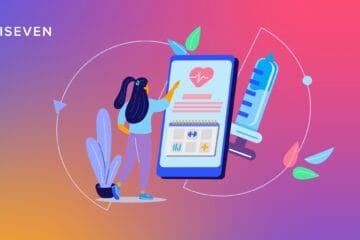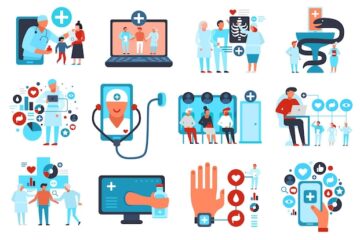
Many organisations can benefit from rolling out internet of things (IoT) applications.
Manufacturers managing customer equipment, from fitness-trackers to aeroplanes; transport and utility companies monitoring for performance metrics and faults; healthcare companies checking on patient wellbeing via medical devices.
Next stage of virtualisation: Containers
Who doesn’t love building blocks? Following the burst of cloud computing, containers are becoming a necessity for all organisational transformation and development. Follow us as we go through the technologies that complement and enhance their use, and outline a first-hand insight into the impact.
Doing so may seem daunting – the complexity of implementing, connecting and managing both the myriad devices and the various technologies concerned is a lot to deal with.
Fortunately, the IoT opportunity does not require getting bogged down with configuring servers and networks and developing applications from scratch. There are a growing number of purpose-designed, cloud-based platform-as-a-service (PaaS) offerings to support IoT-specific deployments, which bring together the technology required.
IoT applications need three basic components. First, the things themselves – these may be pre-existing devices newly brought online; specially deployed probes and sensors; or software installed on user devices, especially smartphones.
Second are gateways that manage groups of devices, perhaps all the sensors in each geographic area, or managing a single larger object, such as a building or vehicle, with multiple things. Gateways play a role in local network management, security and data filtering.
Third is a central IT platform – a shared service or hub that the gateways, or sometimes things themselves, feed all their data back to, providing a central management point. In a 2016 Quocirca research report, entitled The many guises of the IoT, the central IT platform was seen as the most important place to build intelligence into IoT applications. It is the hub that the internet of things platforms provide.
The platforms aim to simplify deploying, managing and operating IoT devices and gateways. They simplify the collection and processing of vast streams of data, giving human operators a view of the big picture – the whole network of things relating to a given application. Decisions can be made about tuning applications based on data analysis, sending instructions back to gateways and/or things.
As with any shared service, a platform used by multiple organisations for IoT deployments creates an ecosystem with data from perhaps millions of devices that is far larger than that of any one of the user organisations. All can indirectly benefit from being part of the ecosystem, gaining insights derived from each other’s data, and some constituents of the platform can provide IoT-specific machine learning to constantly improve the way the IoT networks under their control are managed.
The same terms are heard repeatedly when reviewing the various platform offerings. They all aim to do the same basic thing – simplify the building of intelligent IoT applications, using out-of-the-box capabilities. These may include ensuring deployed devices are compliant with industry requirements, the gathering of audit data, that network connections to devices and data transmission are secure, the provision of dashboards for viewing and managing IoT applications and devices, data processing, storage and analytics to provide timely insight and carry out actions as necessary.
The platforms usually include low code development capabilities – click-based tools for configuring devices, gateway and applications with minimal coding (akin to the fourth-generation languages/4GLs of the 1990s). Sometimes, the capability is embedded in the platform, or support for third-party tools is provided, including state-of-the-art concepts, such as containerisation and orchestration, the subject of a previous Computer Weekly buyer’s guide by Quocirca: What are containers and microservices?
A wealth of platform offerings
The fast growth in demand for IoT deployments has led to a range of suppliers from different backgrounds putting together IoT platform offerings. Some have chosen to specialise in a specific area of IoT, such as smart cities or homes. Included within this mix of technology providers are industrial conglomerates, business application providers, security suppliers, mobile service providers, network suppliers and the major IT platform service providers. The IoT platform market is already maturing, with startups being acquired by the industry giants.
The US industrial giant General Electric (GE) set up a computing division, GE Digital, in 2011 to provide IT services across the range of sectors it serves, including automotive, manufacturing, healthcare, transport and utilities – all high on the list of those that might expect to benefit from the IoT. The highest profile offering from GE Digital is its IoT platform Predix. Based on Cloud Foundry, Predix is designed to handle industrial data, supporting heterogeneous data acquisition and analytics.
Hitachi launched its Lumada IoT platform in 2016, which has now been spun out as a separate entity, Hitachi Vantara. The platform is used by Great Western Railway in the UK, and Hitachi has designs on expansion in various markets from the management of domestic appliances through to power stations.
Business application providers are extending their reach to the IoT as a way of bringing more of their customers’ data under their management with the aim of creating more value from it. Two that now have specific IoT platforms are SAP and Salesforce.
The SAP Cloud Platform Internet of Things provides the ability to onboard, configure and manage many kinds of remote devices, providing decision-making capabilities and tools to optimise processes. It is based on the SAP Hana database. Pre-configured regulatory, environmental and safety compliance is provided for common IoT devices and processes, along with guidelines for energy efficiency and data security.
Salesforce IoT Explorer Edition was announced in October, extending its existing IoT capability. It includes low-code tools to quickly and easily launch IoT applications. Salesforce’s proposition is to use its CRM expertise to proactively apply customer context to IoT applications, such as by triggering actions with real-time rules to enable proactive sales, servicing or marketing processes. For example, a car dealership can proactively trigger actions when connected cars reach a certain mileage threshold or when vehicle diagnostics report failures.
Gemalto is a security specialist with established expertise in securely connecting with devices. In 2011, it acquired SensorLogic, a cloud-based machine-to-machine (M2M) PaaS offering used for asset tracking, telematics and equipment monitoring. The platform is being adapted from its M2M origins, where single objects connected with servers, to supporting the high volumes of devices that come with IoT deployments.
InterDigital’s Chordant subsidiary has an IoT platform focused on smart cities, with standards and application programming interfaces (APIs) that enable the consolidation of data from the diverse sources found across a city, which can then be exposed to city authorities, other businesses and consumers.
Mobile service providers see an opportunity in IoT, to encourage use of their networks to link devices with gateways and hubs. For example, Orange, recently announced its IoT Live Booster Programme, a joint initiative with Deutsche Telekom. It is a mix of open source and commercial software to provide an ecosystem for IoT developers. It is aimed at the smart home market based on the oneM2M standard.
In 2016, Cisco acquired a company called Jasper, which provided an IoT platform for launching, managing and monetising IoT applications. Jasper partners with mobile operators, providing IoT implementations for a range of industries.
Stream Technologies’ IoT-X is a connectivity management platform for IoT deployments, providing high-quality wireless connectivity across cellular, satellite and low-power wide area networks (WANs), providing customers with resilient connectivity.
The big cloud platform providers all see the IoT as an opportunity. Amazon Web Services (AWS) IoT includes a device registry, device gateway and support for the MQTT protocol (a low-power alternative to the HTTP web protocol to extends the life of device batteries). Another feature is Device Shadows, a virtual “shadow” of a device that can be synchronised intermittently with the physical device. This further reduces network traffic and allows devices to be updated virtually, even when offline.
Microsoft’s Azure IoT Suite collects and analyses streaming IoT device data in real time and provides integration with existing customer infrastructure. Automatic alerts trigger actions, for example predictive maintenance. It includes a pre-configured connected factory offering for monitoring industrial equipment.
Google’s Android Things, formerly known as Brillo, is an IoT platform with device developer kits aimed at prototyping, building and supporting devices based on the Android operating system. Support for Android APIs, Android developer tools and other Google services is provided along with the Android Things Console to access, manage and configure IoT devices.
IBM takes an artificial intelligence angle with Watson Internet of Things, described as the hub of all things IBM IoT – anything IBM has a Watson angle these days. Delivered off IBM’s Bluemix cloud platform, Watson IoT manages and controls connected devices, providing access to live and historical data. A context mapping service enables analysis of moving object trajectories, for example to manage transport networks.
Hewlett Packard Enterprise’s (HPE) Universal IoT Platform supports industrial IoT deployments across a range of sectors, including federated device management, data acquisition and data exposure. Simultaneous management of heterogeneous IoT gateways and devices is supported. The platform can be deployed on-premise as well as in a range of cloud environments. HPE cites use cases including connected cars, smart cities and smart metering.
If the investment and message of IT industry leaders and some of the lesser known providers mentioned above is anything to go by, there is plenty going on with the IoT.
Cloud IoT platforms make it easy for organisations to dip a toe in the water and see what can be achieved without making major upfront investments. The main problem will be selecting the right platform from the wide choice available.
source:-.computerweekly.




